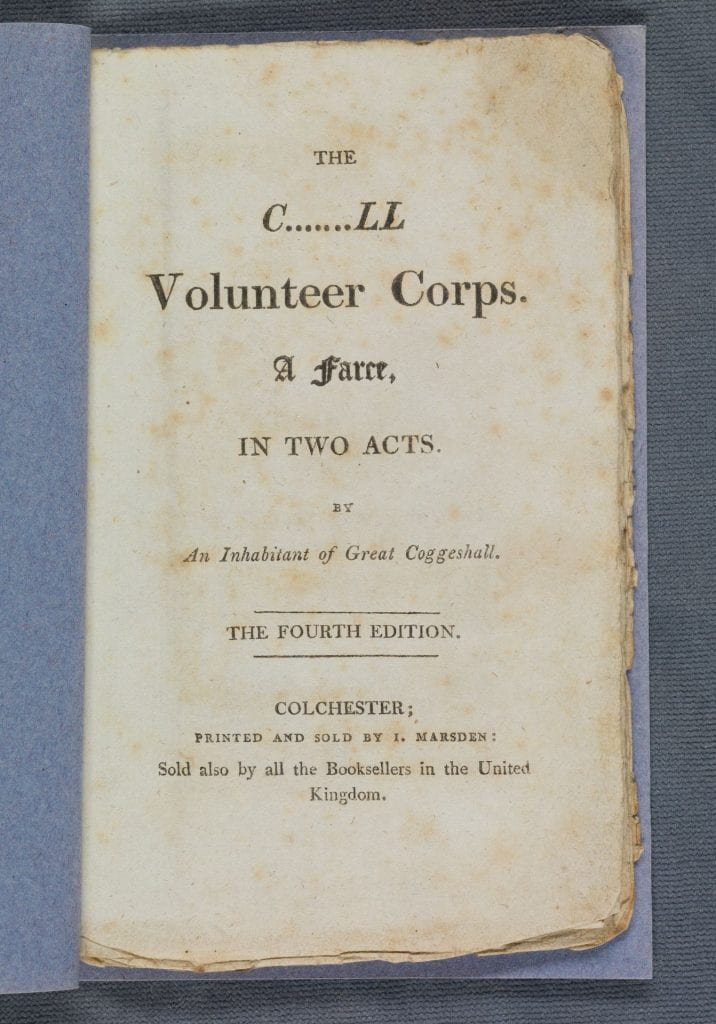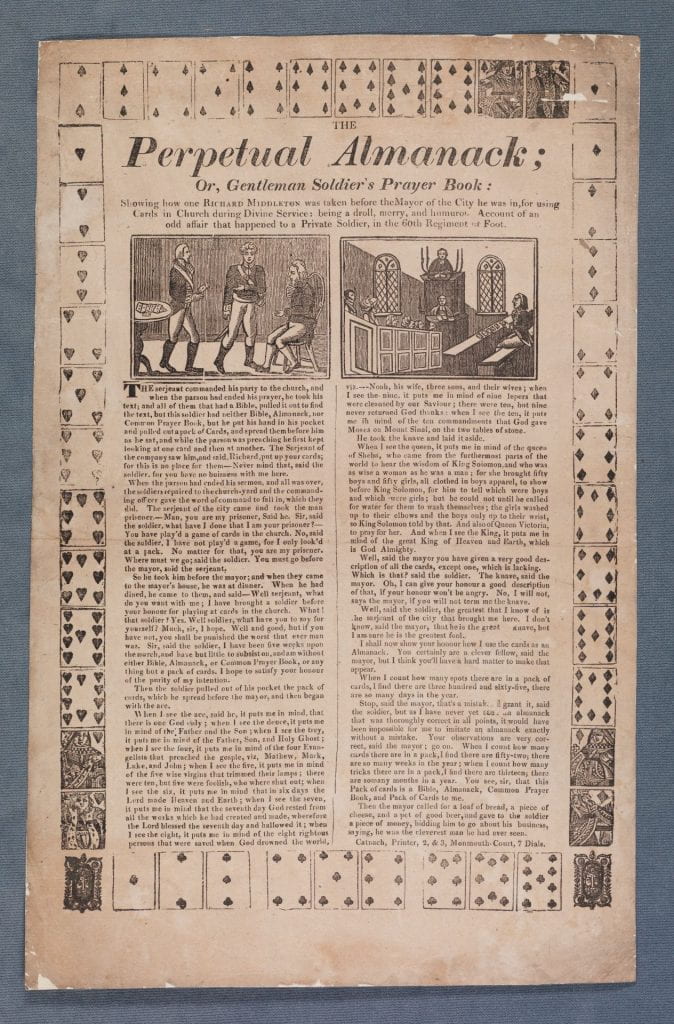
Lady Hertford reclines in an ornate bath, into which water gushes from the jaws of a monster which decorates the pedestal of a Venus. The bath is raised on a triple dais and backed by the pillars and canopy which frame the Venus forming the centre of the design. The Regent, in royal robes, ascends the steps of the dais, poised on his toes like a ballet-dancer, and places a crownlike marquis’s coronet on the head of Lady Hertford who leans towards him, her enormous breasts appearing over the edge of the bath. She says: “I proclaim the Freedom of the Sex & the Supremacy of Love.” Lord Hertford, who bestrides the pedestal, looks down delightedly from behind the statue of Venus. He has horns, and holds his Chamberlain’s staff. The water pours from the bath through the nostrils of a bull’s head with which it is ornamented, and falls in a triple cascade into a circular basin in the centre foreground. On each side of the statue of Venus and flanking the dais is a statue in a niche: ‘Aspasia’ (left) and ‘Messalina’ (right); both are disrobing. Near the fountain (right) a hideous hag, naked to the waist, crouches before a tall brazier in which she burns a ‘Mantle of Modesty’. The building appears to be circular, an arc of the wall forming a background on each side of the centre-piece. On this are tablets inscribed respectively ‘Hic Jacet Perdita’ [Mary Robinson, the Prince’s first mistress, see No. 5767, &c.]; ‘Hic Jacet Armstead’ [Mrs. Fox, who had been the Prince’s mistress, cf. No. 10589]; ‘Hic J[acet] Vauxhall Bess’ [Elizabeth Billington, see British Museum Satires No. 9970; her mother sang at Vauxhall, see British Museum Satires No. 6853]. In the foreground on the extreme right a buxom young woman puts her arms round the Duke of Cumberland, saying, “I’ll go to Cumberland”; he walks off with her, to the fury of an admiral just behind the lady who clutches his sword and is seemingly her husband. Cumberland wears hussar uniform with a shako and fur-bordered dolman, with a star and a large sabre. A meretricious-looking young woman (? Mrs. Carey) puts her arms round the Duke of York, saying, “And I to York.” The Duke, who wears uniform with a cocked hat and no sword, looks down quizzically at her. Behind him a tall thin officer in hussar uniform bends towards Princess Charlotte, taking her hand; he says: “Sure & I’ll go to Wales.” She runs eagerly towards him. As a pendant to these figures, Grenadiers stand at attention on the left, holding bayoneted muskets; they have huge noses, and smile at a buxom lady wearing spurred boots who addresses them with outstretched arm, saying, “And you for Buckinghamshire.” At her feet is an open book: ‘Slawkenberges Chapr on Noses’ [from Sterne’s Slawkenbergius, imaginary author of a Rabelaisian fantasy in ‘Tristram Shandy’]. They have a standard with the word ‘Buckin …’ on it. Behind the Prince (left) stands Tom Moore, looking up at the coronation; he holds an open book: ‘Little Poems / Ballad . . .’ He says: “I’ll give you one Little Song More [see British Museum Satires No. 12082].” Behind him stands Mrs. Jordan, placing a chamber-pot on the head of the Duke of Clarence, who wears admiral’s uniform with trousers.”–British Museum online catalogue.
- Printmaker: Cruikshank, George, 1792-1878, printmaker.
- Title: The coronation of the Empress of the Nairs [graphic] / G. Cruikshank sculpt.
- Publication: [London] : Pubd. September 1st, 1812, by W.N. Jones, No. 5 Newgate St., [1 September 1812]
812.09.01.01++
Acquired September 2023



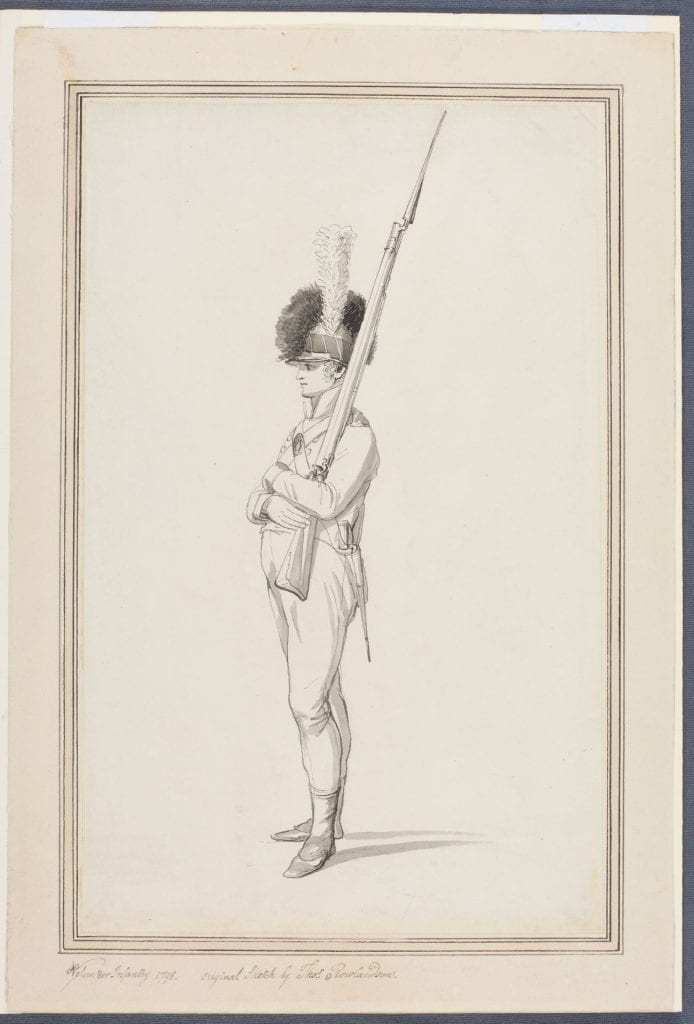
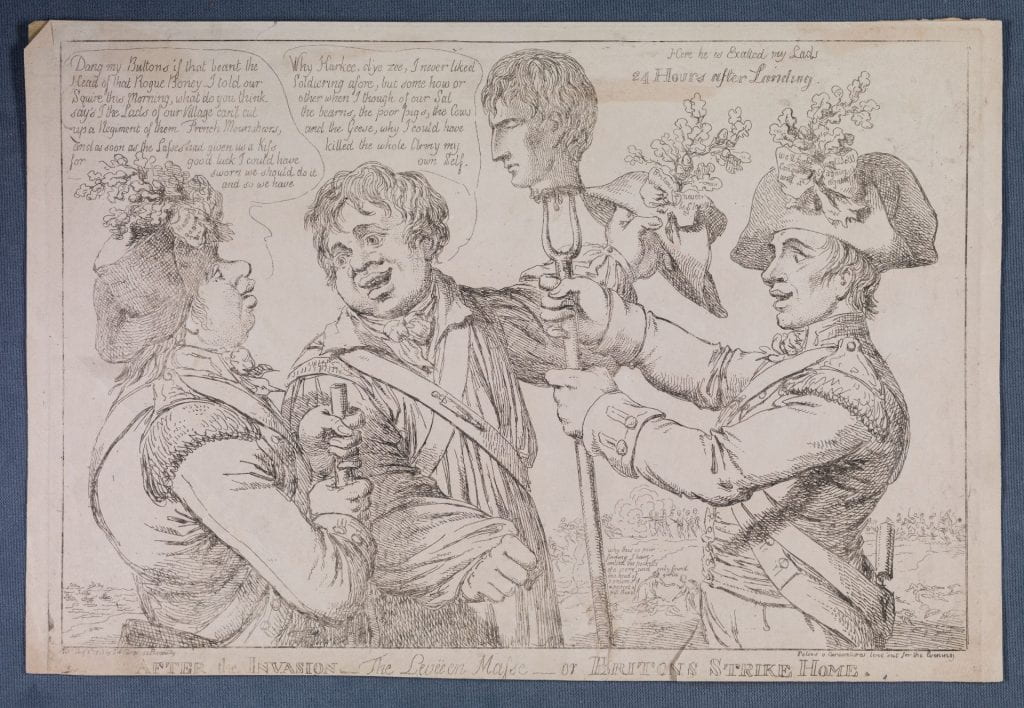
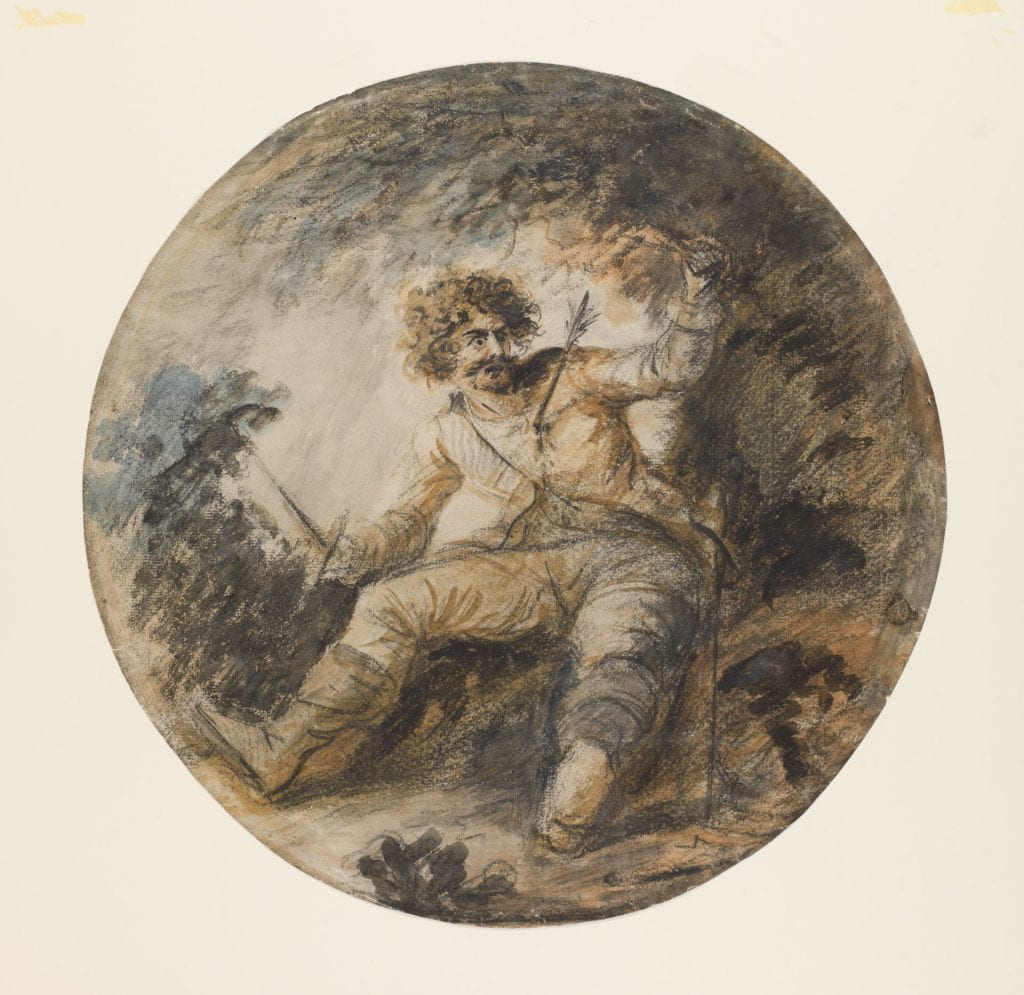
 Invitation to a dinner of the Guardians of the Asylum for Female Orphans. At top is a scene of a woman leading three orphan children away to the left, while the bodies of soldiers are taken away to the right; text with the details of the meeting engraved below. The whole is enclosed within a border of leaves.
Invitation to a dinner of the Guardians of the Asylum for Female Orphans. At top is a scene of a woman leading three orphan children away to the left, while the bodies of soldiers are taken away to the right; text with the details of the meeting engraved below. The whole is enclosed within a border of leaves.
